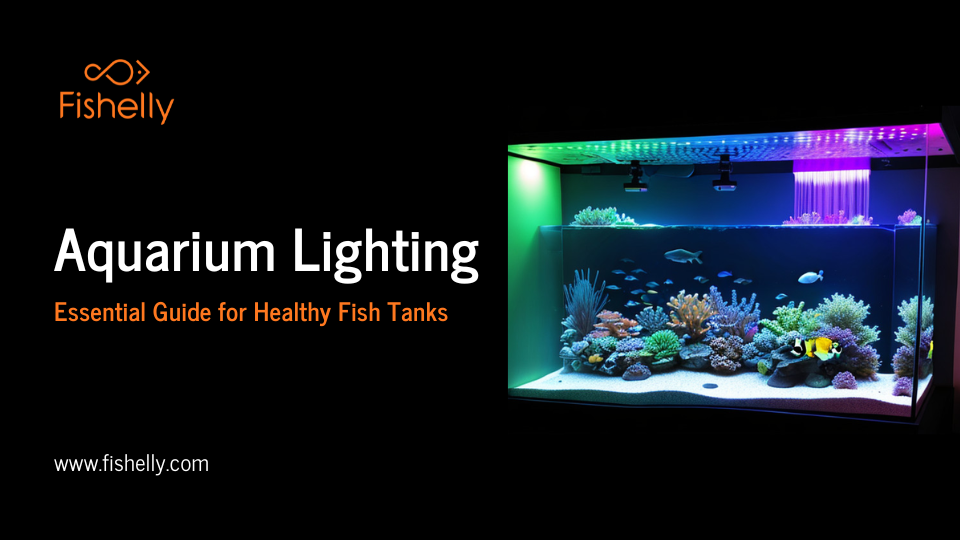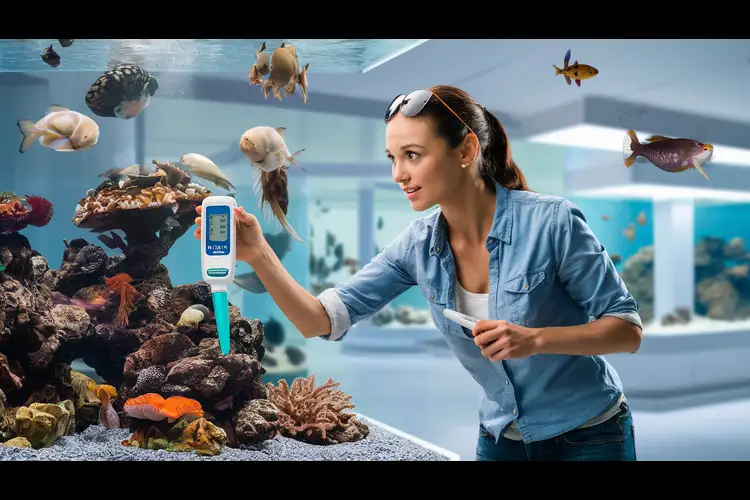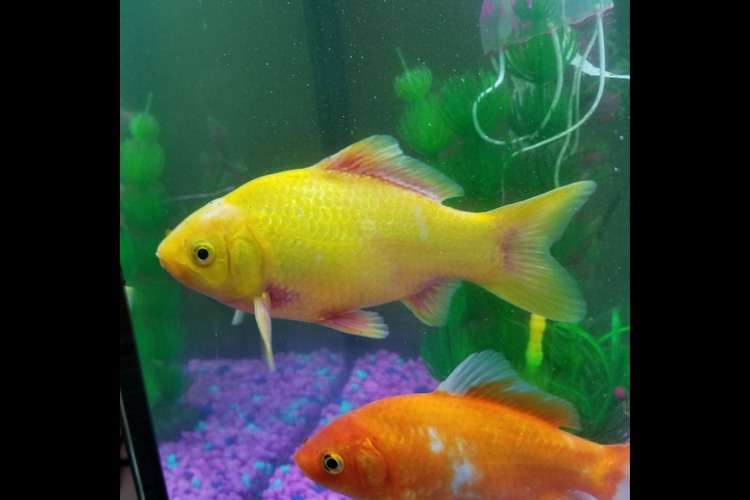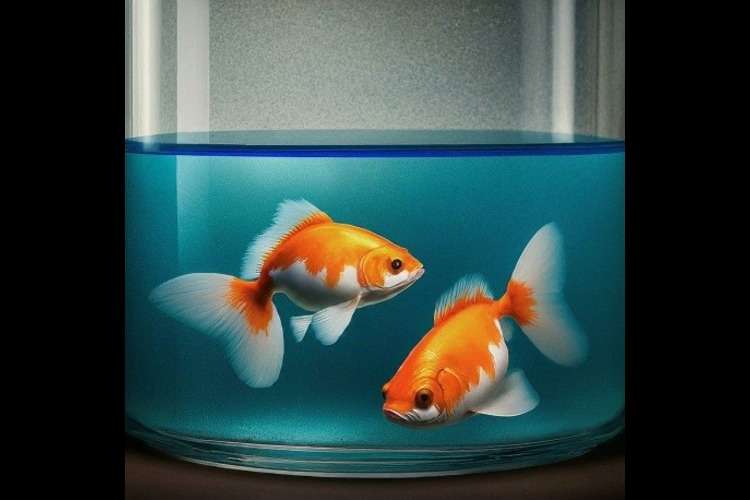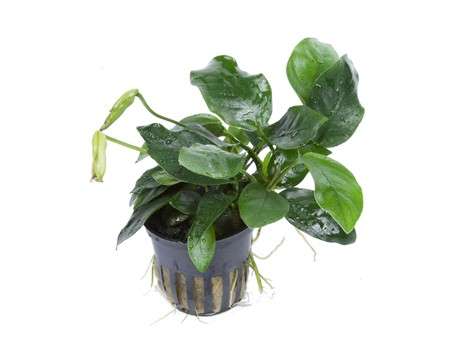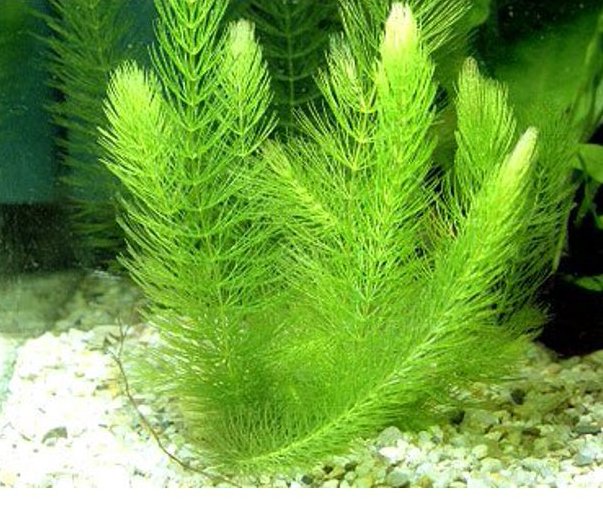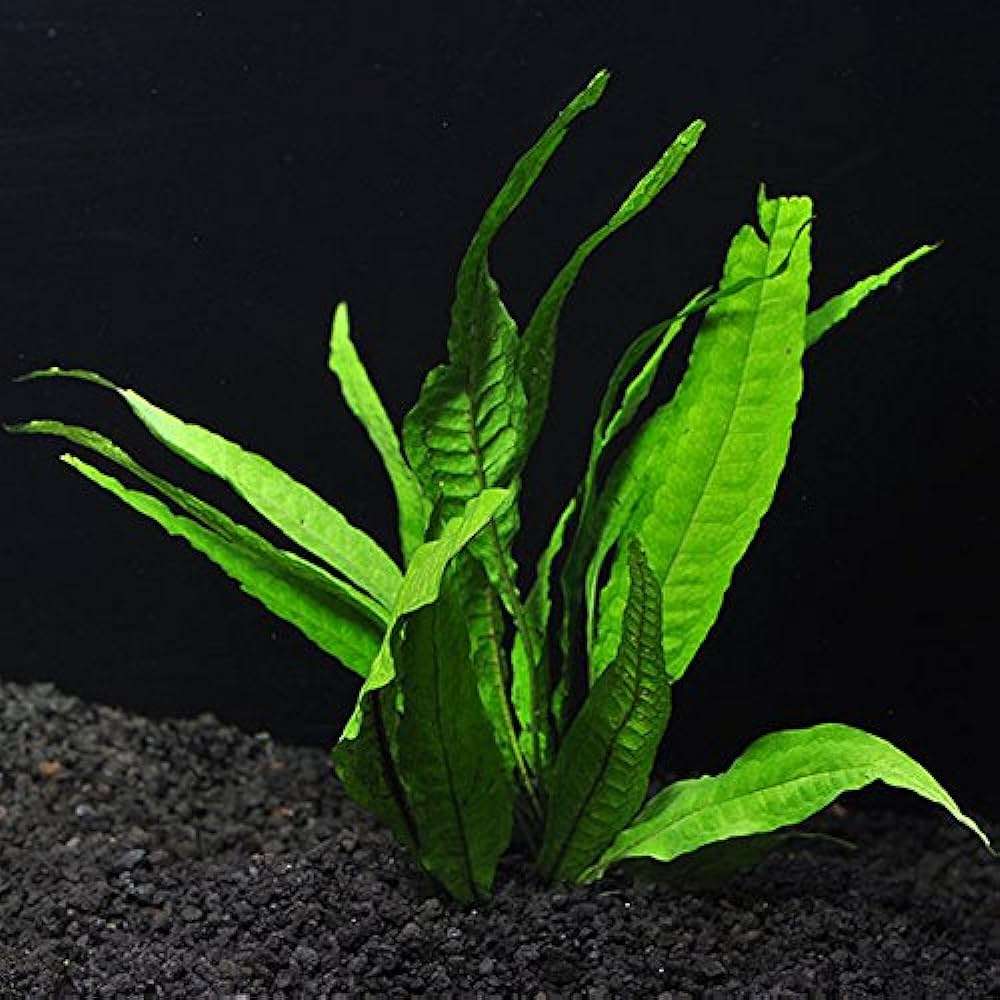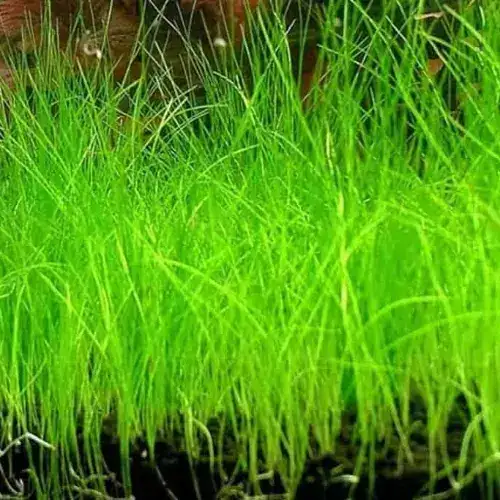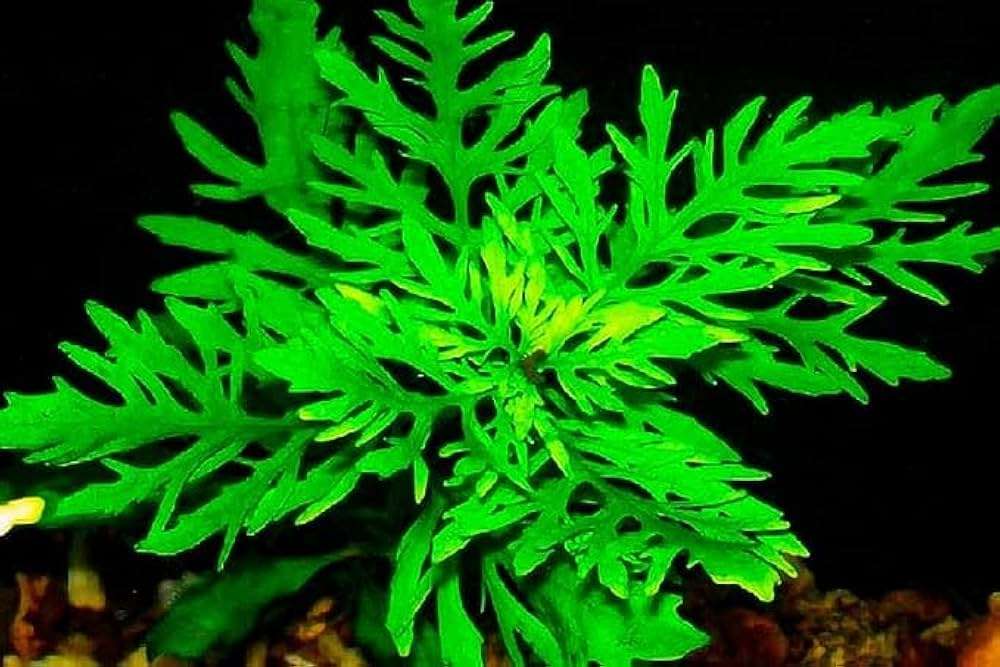Aquarium Lighting: Essential Guide for Healthy Fish Tanks
Discover the importance of aquarium lighting for plant growth, fish behavior, and tank aesthetics. Learn tips for choosing the right lighting based on tank size.
Table of Contents
- What is Aquarium Lighting?
- How Does Light Work in an Aquarium?
- What Role Does Light Play in an Aquarium?
- Connecting Light with Fish Behavior in Nature
- Long-Term Consequences of Aquarium Lighting
- Types of Lights for Aquariums
- How to Choose Light According to Tank Size
- Using RGB Lights in Aquariums
- General Guidelines for Aquarium Lighting
- Faq
- Conclusion
Aquarium lighting is the most important element of aquarium care that has multiple objectives, such as beautifying the tank, cultivating plants, and keeping the ecosystem healthy for living aquatic life. The appropriate illumination replicates either sunlight or moonlight and supports the biological functioning within the tank that helps both plants and fish.
What is Aquarium Lighting?
Aquarium lighting means man-made illumination given to the aquarium. This would intend to simulate what might be present in natural waters like the cycle of natural daylight and moonlight. It plays an essential part in the world of aquascaping, as well as on the plant health and welfare in general fish comfort. The mere aesthetic view created by such aquarium lighting contributes not only to the beautification of the aquarium but also fosters the proper maintenance of its interior ecosystem.
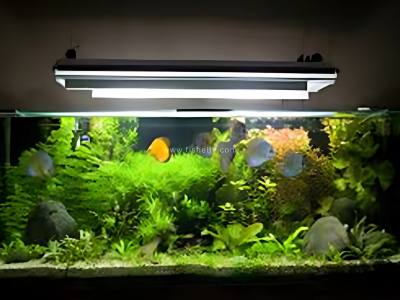
How Does Light Work in an Aquarium?
When light enters the aquarium, it penetrates the water and interacts with the tank’s inhabitants, plants, and décor. Properly regulated lighting provides a steady cycle of light and darkness that mimics day and night, helping to maintain biological rhythms for both fish and plants. This regulation of light can simulate natural conditions, promoting growth and providing fish with a comfortable environment.
Light interacts with plants to enable photosynthesis, something that's essential for their health and the production of oxygen. It also governs circadian rhythms in fish, and other aquatic animals like it, which allows them to engage in normal behavior like feeding and sleep.
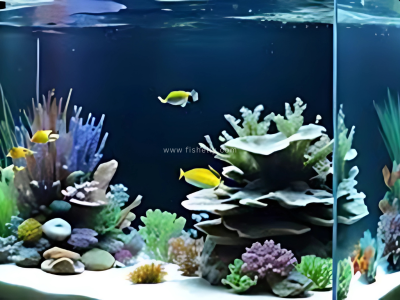
What Role Does Light Play in an Aquarium?
Imitation of Natural Light
Aquarium fish and plants in the aquarium also require natural cycles of light. Aquarium lights provide a transition in light just as it occurs from day to night in the wild, providing familiarity and a soothing effect to fish so they can exhibit their natural behaviors, especially to sensitive species.
Enhancing Plant Growth
Live plants need light to facilitate photosynthesis, hence lighting in an aquarium. Lack of adequate lighting will prevent plants from having energy to stay and grow well. Poor health and even death in plants occur as a result. Proper lighting promotes photosynthesis and nutrient absorption for the production of oxygen, keeping a balanced ecosystem in check.
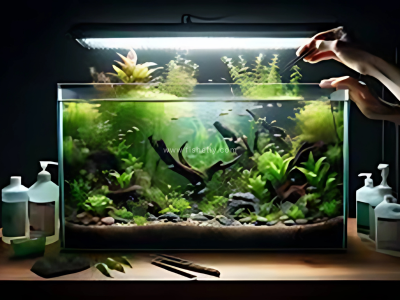
Bacteria Control
Certain specialized lighting systems, such as UV sterilizers, emit light that kills harmful bacteria in the tank. This helps to maintain the overall water quality and reduces the risk of disease among the tank’s inhabitants. UV sterilizers can be particularly beneficial in tanks prone to algae or bacterial blooms.

Aesthetic Appeal
Lighting not only supports the biological needs of the aquarium but also promotes the visual effects of the display. Proper lighting brings out colors in the fish and decorations with a vibrant tone, making them visually dynamic and attractive. Light also highlights the different textures and details of the aquarium's hardscape (rocks, substrate, etc.) and plants, which add more beauty to your setup.
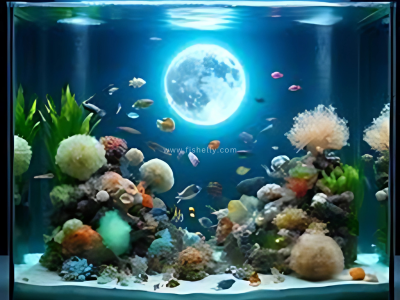
Connecting Light with Fish Behavior in Nature
In natural habitat, fish experience differences in light and darkness during their day. This means that light is experienced both during the daytime and at dusk and dawn through softer moonlight or starlight at night. These changes are what affect most of their normal behaviors, feeding, swimming, and resting time. Aquarium keeping: This cycle will help the fishes feel comfortable when kept in aquaria, helping avoid stress.
Lightening units have adjustable lights; thus, an aquarium can emulate moonlight and even a soft transition from dawn to dusk. This way, fish will experience a more realistic environment that has a positive influence on their comfort and, according to some aquarists, even triggers specific breeding behaviors of certain species of fish. Aquarium life can contribute greatly to the total health and duration of the living.
Long-Term Consequences of Aquarium Lighting
Despite the fact that light is necessary for the growth and well-being of plants and animals, improper lighting can have severe long-term effects on the inhabitants in the aquarium.
Fish Stress
Stress in fish can be caused by prolonged exposure to bright or harsh lighting. Stressful lighting conditions can lead to aggressive behavior, poor feeding habits, and weakened immune systems. It's essential to provide a balance of light and dark, replicating natural cycles.
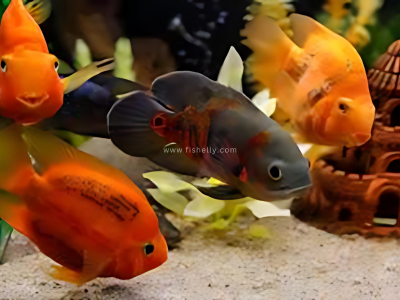
Laziness and Sleep Disruption
Just like humans, fish need time to rest. Poor dark periods and too much lighting can disrupt their sleep patterns, leaving them tired and lethargic. Take some time to ensure darkness at night so that these fish can rest and revive themselves.
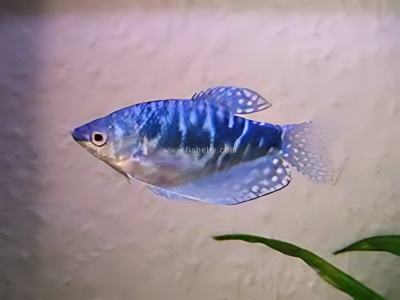
Algae Growth
While light is essential for the growth of plants, too much or constant lighting can promote algae growth. Algae can very quickly take over the tank, causing an unappealing greenish color to the water and compete with your plants for nutrients. To prevent this, it is very important to regulate the amount and intensity of light in the aquarium.
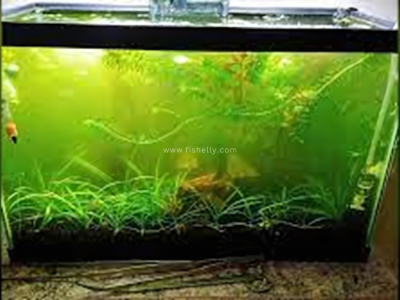
Types of Lights for Aquariums
LED Lights
LED lights are the most popular option for modern aquariums. They are energy-efficient, long-lasting, and available in a variety of colors. RGB LED lights can be customized to change colors and intensity, offering flexibility to create different lighting effects. These lights are particularly suitable for smaller aquariums and planted tanks.

Fluorescent Lights
Fluorescent lights have been used in aquariums for many years because they are inexpensive and provide bright illumination. They are perfect for tanks with live plants because they emit the correct spectrum of light needed for photosynthesis. Fluorescent lights come in standard and compact forms.
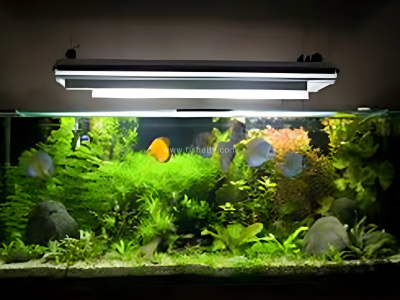
Halogen Lights
Halogen lights are a high-intensity lighting source that is best for bright lighting for tanks, which are large in size or contain specific plant species. These consume more power and produce heat than LED lights.

UV Sterilizers
UV sterilizers release ultraviolet light that can kill bad bacteria, parasites, and algae in the water, improving water quality and decreasing the chances of diseases. They are usually combined with other forms of lighting to maintain a healthy and clean environment in the aquarium.
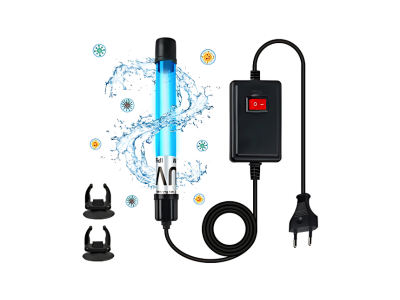
How to Choose Light According to Tank Size
Small Tanks (10-20 gallons)
LEDs are recommended for small tanks since they work well in low lighting conditions and would be around 10-15W, compact fluorescent lights, or something of the sort. They save energy and use plenty of light to illuminate the tank without overheating it.
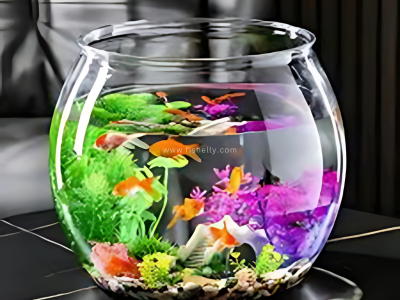
Medium Tanks (20-40 gallons)
For medium-sized tanks, you need lighting that covers more. 15-30W LED or fluorescent lights will do the trick. As there are live plants in the tank, you will find adjustable intensity lights useful to fine-tune your lighting for your tank.

Large Tanks (40+ gallons)
Large tanks require high-output LED or fluorescent lighting systems, with wattages of 30-50W or higher, depending on the plant density and fish requirements. You may need multiple lighting units to ensure even coverage across the entire tank. Adjustable systems are recommended for large setups, as they allow for flexibility in managing light intensity.
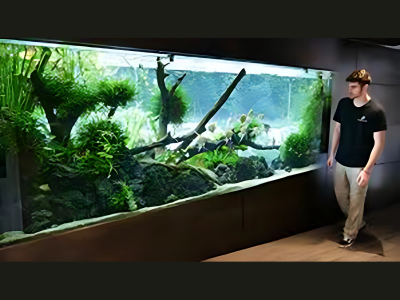
Using RGB Lights in Aquariums
Customised colour preview; RGB lights let you adjust the lighting in your aquarium so that it elevates the natural colours of the fish, plants, and ornaments. In addition, you can develop dynamic color effects that will create eye-pleasing vividness to your aquarium. RGB lighting is best used in tanks with colour fish or plants that require light of a particular spectrum.
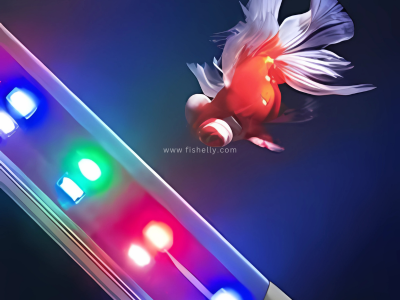
General Guidelines for Aquarium Lighting
Lighting Time: Keep lights on for a period of around 8 to 10 hours a day, which will simulate a normal day-night cycle. This also helps the plant in photosynthesis and keeps fish healthy as there is adequate lighting and periods of darkness.
Intensity: Depending on the type of tank you have, you will have to adjust the intensity of light. For tanks that contain live plants, a bright light will be required. On the other hand, soft lighting will be enough for fish-only tanks.
Tank Size: Ensure the lighting system is appropriately sized for your tank. Too much light can cause algae growth and stress fish, while too little light can hinder plant growth and make the tank appear dim.
Faq
1. Why is lighting important in an aquarium?
Lighting helps plants grow, regulates fish behavior, and enhances tank aesthetics.
2. How does light affect fish behavior?
It mimics natural light cycles, helping fish maintain their biological rhythms and reducing stress.
3. Can the wrong lighting cause problems?
Yes, it can lead to algae growth, fish stress, and disrupted sleep patterns.
4. Best lighting for a small aquarium?
LED lights are ideal for small tanks (10-20 gallons), as they are energy-efficient and provide enough light.
5. How much light do plants need?
Plants need 8-10 hours of light per day to thrive.
6. Can lighting affect algae growth?
Yes, too much light can promote algae growth. Regulate light duration and intensity.
7. Difference between LED and fluorescent lights?
LEDs are energy-efficient and long-lasting, while fluorescent lights are good for plants but consume more power.
8. Best lighting for a medium-sized aquarium?
Use 15-30W LED or fluorescent lights with adjustable intensity.
9. Best lighting for a large aquarium?
Use high-output LED or fluorescent lights with 30-50W power or higher, possibly multiple units.
10. What is RGB lighting?
RGB lighting allows you to adjust the color and intensity of the light for vibrant effects.
11. How long should I keep lights on?
8-10 hours a day is recommended to mimic natural day-night cycles.
12. Can lighting affect fish health?
Yes, improper lighting can cause stress, disrupt sleep, and affect feeding.
13. Can UV sterilizers help?
Yes, they kill harmful bacteria, parasites, and algae, improving water quality.
14. How do I know if I'm using the right lighting?
Ensure the lighting suits the tank size and needs of your plants and fish.
15. Is a light cycle necessary?
Yes, a consistent light cycle helps maintain a healthy aquarium environment.
Conclusion
In conclusion, aquarium lighting is not just about aesthetic appeal—it is an essential part of creating a thriving aquatic environment. The right type of light, intensity, and recommended lighting duration can support the health and happiness of both fish and plants. Whether you have a small tank or a large aquarium, the right lighting system can make all the difference in creating a visually stunning and biologically balanced ecosystem.
